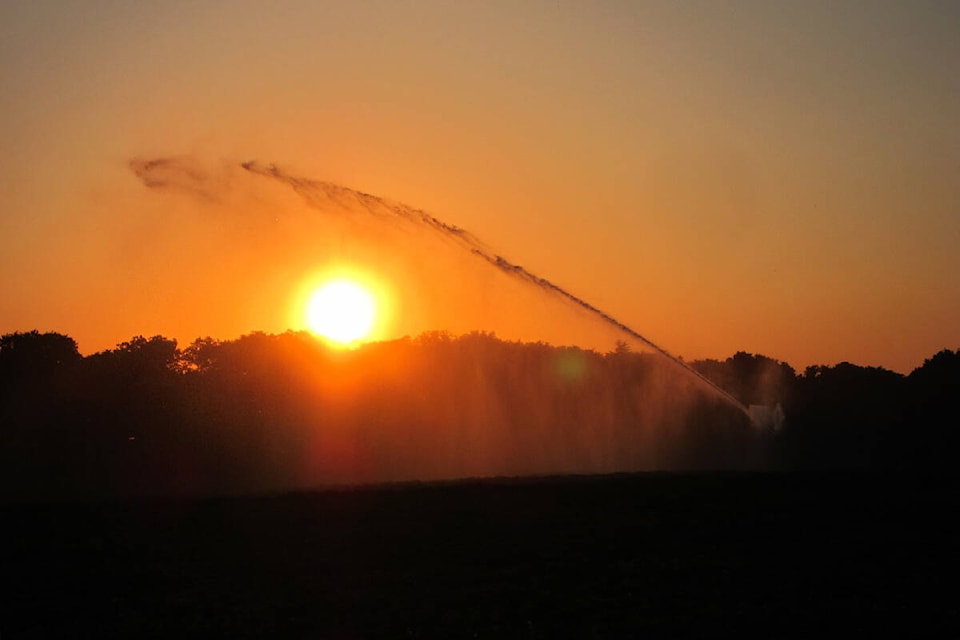British Columbians will be alerted in advance of any future heat events or emergencies, launched by the province one year after hundreds died from a summer 2021 heat dome.
The province announced its new response system Monday (June 6), with two levels: warnings and extreme heat emergencies.
Warnings, defined as a “moderate increase in public health risk,” will be triggered by different temperature thresholds throughout the province.
In the southwest (Lower Mainland and Vancouver Island), a forecast of two days or more of daytime highs of 29 C or higher and night time lows of 16 C or higher will prompt a warning. In the Fraser Valley it will be a daytime high of 33 C and night time low of 17 C; in the southeast (Interior B.C.) it will be 35 C and 19 C; in the northeast it will be 29 C and 14 C, and in the northwest it will be 29 C and 13 C.
Warnings, Health Minister Adrian Dix said, will allow individuals and local governments to prepare, whether that’s purchasing an air conditioner, checking on loved ones, or implementing cooling stations.
It will be up to local governments to have their own plans, Dix told reporters during a news conference.
Heat emergencies – “a very high increase in public health risk” – will be triggered when heat warning criteria have been met and the threshold daytime maximum temperatures are expected to substantively increase day-over-day for three or more days. In that case, the province’s new dedicated heat committee will decide whether to use Canada’s Alert Ready tool to issue a broadcast-intrusive alert through radio, television and wireless devices.
The tool has been used in the past to notify people about tsunami warnings, civil emergencies and Amber Alerts. In early May, B.C. announced it would begin using the text alert system for floods and wildfires this year, but said at the time they still hadn’t determined the parameters for a heat warning to be included.
All emergency events will now also trigger the use of a new clinical safety plan by BC Emergency Health Services, which will guide them through extreme events with steps like reassigning staff to support high call volume areas, reducing turnaround time at key hospitals and using alternative transport options so ambulances remain free for life-threatening calls. They may also delay or temporarily stop lower priority interfacility transfers and mobilize non-frontline clinicians.
The province says it expects to issue heat warnings one to three times a summer, and extreme heat emergencies once or twice a decade.
Along with launching the alert system Monday, B.C. also released a preparedness guide to help people to create their own emergency plans. Officials suggest people identify who is at risk during a heat event and determine where they will be able to stay cool and safe. It also provides guidance on how to spot signs of heat illness and educates people on the impacts of climate change.
In 2021, a heat dome caused the deaths of nearly 600 British Columbians, according to the BC Coroner Service. Almost 70 per cent of them were over the age of 70.
Asked how they plan to protect people with mobility challenges or without a support network to rely on, Dix said they are waiting on recommendations from a forthcoming BC Coroner’s report. It is set to be released Tuesday (June 7) morning.
READ ALSO: Nearly 600 people died due to summer heat waves: BC Coroners Service
@janeskrypnek
jane.skrypnek@bpdigital.ca
Like us on Facebook and follow us on Twitter.
